Last updated on May 8th, 2024
Featured image: Valletta, the capital of Malta, a fortress and UNESCO World Heritage Site / Photo by merc67 via Envato
A surprising story of independence, fortitude and resilience
by Carolyn Ray
At first glance, with its Maltese windows, creamy white limestone buildings and Baroque architecture, Valletta, the capital of Malta, might be mistaken for another charming European city. After all, it’s a UNESCO World Heritage Site, with untouched beaches, warm weather year-round, and a diver’s paradise. But there’s more to see in Malta than meets the eye here, starting with a fascinating story of independence, fortitude and resilience.
Located at the crossroads between Europe, North Africa and the Middle East, Malta’s strategic location has made it the envy of many countries. A succession of powers has contested and ruled Malta, including the Phoenicians and Carthaginians, Greeks, Romans, Arabs, Normans, Aragonese, Knights of St. John, French, and British. It’s only in the past few decades that Malta, once a part of the Kingdom of Sicily, became independent.
The Knights of Malta
In 1530, Holy Roman Emperor Charles V leased the archipelago to the Roman Catholic religious order the Knights of the Hospitaller Order of Saint John of Jerusalem, of Rhodes, and of Malta. The knights were noblemen from the most important families of Europe, and their mission was to protect the Catholic faith. Today, the Knights of Malta is the world’s oldest surviving order, known for its military and chivalrous character.
During World War II, it’s estimated that 17,000 tons of bombs were dropped on Valletta, making it one of the most heavily bombed cities during the war, as the Italian and German navies sought to destroy the British defences and ports. Thousands of people lived underground, hidden for years against the attacks by Italian, and then German bombers, during World War II. Malta holds the record for the most sustained bombing attack: some 154 days and nights. Over 10,000 buildings were destroyed or extensively damaged. In 1947, the Islands were granted some £30 million to help them rebuild. In 1979, the British forces left Malta completely, paving the way for a new beginning.
Get stories like this delivered directly to your inbox – join the mailing list here!

Malta’s unique architecture / Photo by rawf8 via Envato
A unique language and culture
Arriving on the bus from the airport, one of the first things I notice is the language – Maltese. Maltese has been the official language of Malta since 1964, alongside English. It’s based on Arabic, which comprises about a third of its vocabulary, but there are also Italian, Sicilian and English words. Fortunately, English is Malta’s second official language.
Malta has been growing quickly over recent years. With warm weather all year long and a population of just over 500,000, Malta is popular among digital nomads, with visas that allow you to stay in the country for a year and renew for up to three years. Learn more here. At 246 square kilometres (95 square miles), it’s small enough that you can travel easily from one end to the other within hours. Getting to Europe is simple. From Sicily, it’s only 60 miles (96.6 km) so while you can fly, there’s a fast ferry which takes less than two hours.
The Maltese Archipelago includes the smaller islands of Gozo and Comino. There are four main areas in Valletta: Valletta Old Town, the Three Cities, Saint Julian’s and Sliema. During my week in Malta, I travel by any means possible – bus, ferry, Bolt and foot – and only touch the surface of what’s there. My favourite way to travel is walking, and then taking the ferry, all the while feeling perfectly safe, even on the back streets.
The surprising story of Valletta’s underground
One of the most surprising things about Valletta is its underground, which runs below the streets. Underneath St. John’s Co-Cathedral, I’m standing in an enormous cistern at least 50 feet high, with vines and tree roots that trail down from the ceiling. Water drips along the wall and the limestone under my feet is slippery.
According to my guide, this is a ‘smaller’ cistern among the 1,000 or so underground, and there are larger ones not yet open to the public. The Underground Malta tour begins in a cistern near, a network of stairs and tunnels carved deep into the rock.
Originally used for drainage and water supply, these tunnels became homes for thousands of Valletta residents seeking shelter from World War II. Malta has been besieged by many nations, including France in Napoleon’s time and then, as a war-torn island during the second world war, when its 30,000 citizens were forced to hide underground in these cisterns and tunnels, sometimes for years.
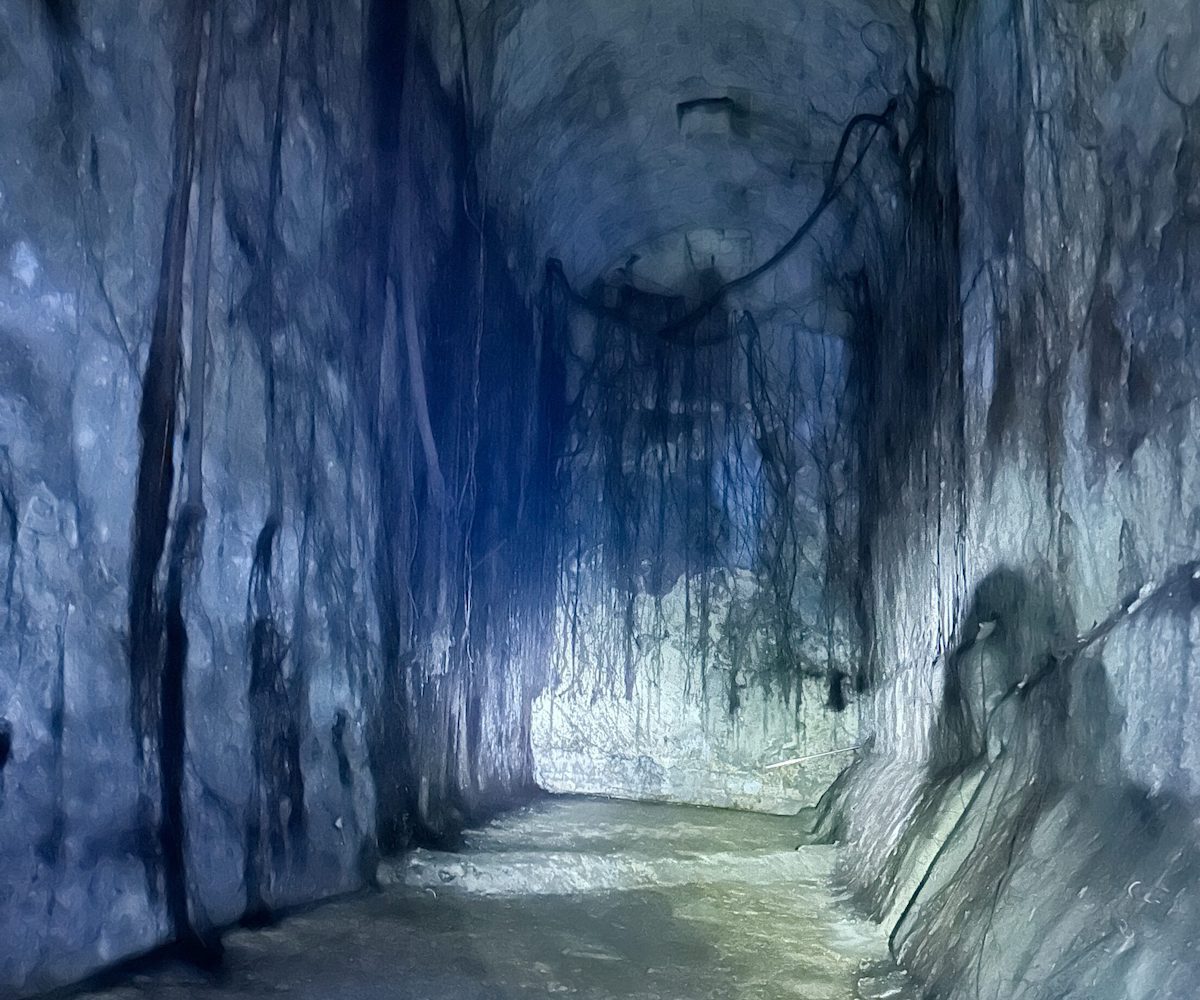
Valletta’s Underground was once home to thousands / Photo by Carolyn Ray
I peer into small rooms where families would have gathered together in fear as the earth shuddered above their heads. Witnessing the living conditions is shocking. I see faded tiles on the floor, or a cross carved into a doorway entrance, small touches to make these rocky caverns feel like home. Even more astonishing, the entire area was enlarged by hand, to tunnels several feet wide from the shoulder-width tunnels carved hundreds of years earlier by the knights to cross the island.
The Grand Master’s Palace, showing pride in Malta’s heritage
Valletta was named after Jean Parisot de Valette, who succeeded in defending the island from an Ottoman invasion during the Great Siege of Malta in 1565
I’m in luck to arrive in February 2024, just weeks after the grand opening of the newly renovated Grand Master’s Palace, which I heard about from a Malta expat group that I’ve joined on Facebook. As it turns out, everyone seems to know someone else who was involved in this massive €40 million project. You can feel the pride fly off the pages.
The Palace itself was one of the first buildings in the new city of Valletta founded by Grand Master Jean de Valette in 1566, a few months after the successful outcome of the Great Siege of Malta in 1565. During the British period, it served as the Governor’s Palace and was the seat of Malta’s first constitutional parliament in 1921. The building itself is a true treasure. While the armour was less interesting to me, I enjoyed the beautifully restored frescoes of the Piano Nobile, opulent State Rooms, including the Grand Master’s Study/Sitting Room, the Throne Room, Pages’ Room, and the Ambassadors’ Room.

The newly renovated Grand Master’s Palace reopened in early 2024 / Photo credit Carolyn Ray
Honouring the order in the St. John’s Co-Cathedral
You’ll want to go early to avoid the cruise ship crowds to see St. John’s Co-Cathedral, with its over-the-top baroque finishes. While there is much to see on the walls, including tapestries, Caravaggio’s famous painting of the beheading of St. John, and the gilded reliquary of St John the Baptist’s hand, the most amazing part of this Cathedral is beneath your feet.
This is where the Knights of Malta were buried for centuries and their marbled tombstones cover the entire floor of the Church. Every tombstone is different, as each knight had his own coat of arms, symbols and colours. Crowns, coronets, shields, flags, helmets and even skeletons adorn the tombstones, which date from the early 17th century to the late 18th century.
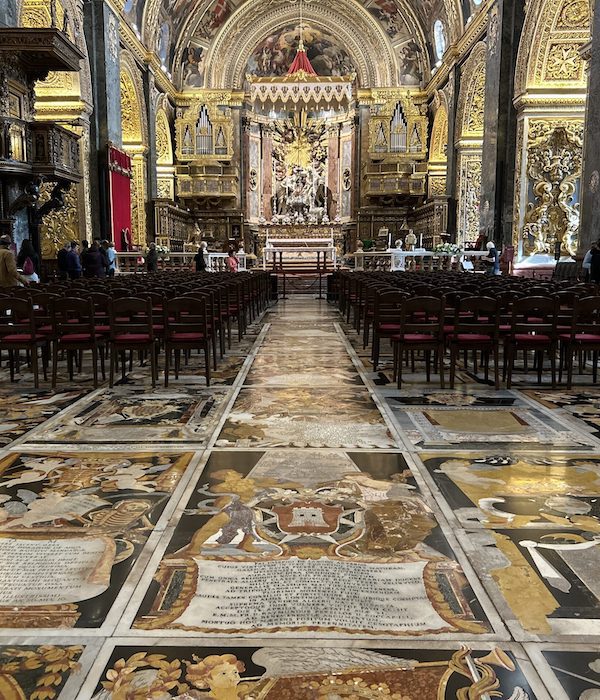
The marbled tombstones of St. John’s Co-Cathedral / Photo by Carolyn Ray
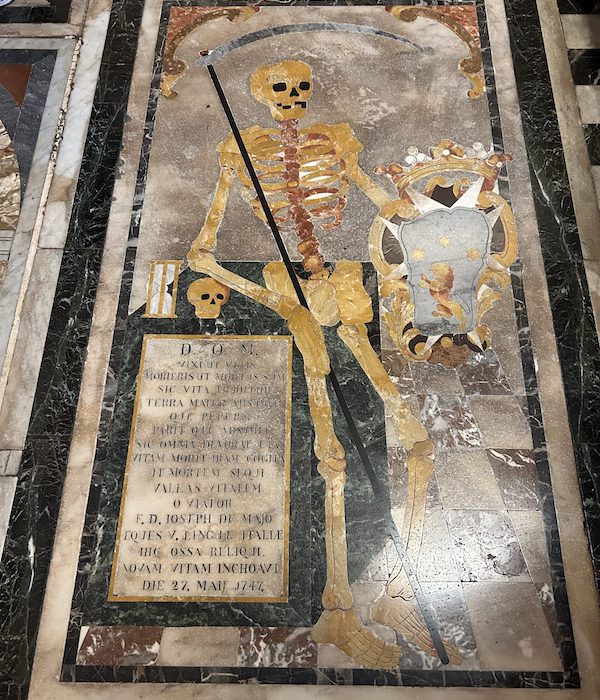
Each tombstone is different / Photo by Carolyn Ray
Other attractions worth seeing
St. Paul’s Catacombs: Nearby in Rabat, St. Paul’s Catacombs represent the earliest and largest archaeological evidence of Christianity in Malta, used by Christian, Jewish and Pagans starting in the 3rd or 4th BC. According to Visit Malta, the catacombs form a typical complex of interconnected underground Roman cemeteries that were in use up to the 7th, and possibly the 8th centuries AD, creating a system of interconnected passages and tombs that cover an area over 2000 square meters.

St. Paul’s Catacombs represent the earliest and largest archaeological evidence of Christianity in Malta in Rabat / Photo credit Carolyn Ray
Mdina: While there’s something for Game of Thrones fans everywhere in Malta, Mdina and nearby Rabat are among the most well-known filming locations. Once the island’s capital from antiquity to the medieval period, Mdina is a walled hilltop village with fabulous views of the surrounding countryside. Mdina Gate is the main entrance into the city, over an arched moat bridge. Game of Thrones fans will recognize its debut in season one, when Lady Catelyn Stark rides into Kings Landing through this very entrance. While I didn’t have time to explore this city as I would have liked, it seemed charming, with winding streets and adorable shops. Find a sightseeing tour in Malta here.
The Three Cities: Just a short ferry ride away from Valletta Old Town are Vittoriosa, Cospicua and Senglea. I’m told that the large flat rock near the fort becomes a beach but there are jellyfish, so be warned if you swim there! This area is quieter with great views of Valletta.
Upper Barrakka Gardens. This is the place to come for views of the Three Cities. Every day there is a cannon at noon and 4 pm.
Church of St. Paul’s Shipwreck: For its size, Malta has a lot of churches – over 350 — and this one astonished me. On my last day in Malta, I happened to look inside a small doorway. Walking inside, I was greeted by hot pink walls, crystal chandeliers and a baroque gilt rivalling St. John’s Co-Cathedral. Built in 1572, this church is named after a Biblical story which says that Paul was being taken to Rome to be tried as a political rebel, but ran aground in Malta, and was warmly welcomed by the Maltese people.
Day trips: Malta is small enough that you can drive without fear of getting lost (plus, it’s an island so you can only go so far!) If you rent a car, remember it’s left-hand driving. I’d suggest Marsaxlokk Harbour, a colourful fishing village that’s a perfect place for afternoon lunch. Marsaskala is a five-minute drive away from the harbour, perfect for sunset views. It has very high cliffs so watch your step near the edges, it’s very steep and rugged. You can only drive so far and then will need to walk in. Click here to book the perfect day trip from Malta.
Blue Grotto: In February, there are no boat tours of the Blue Grotto but you can see it from above for free. I found many things in Malta expensive, particularly the tourist attractions, so was happy to find that some things in Malta don’t cost anything. Find a boat tour to the Blue Grotto here.
Note: While you can visit each of these attractions separately, it might be worth purchasing a Malta Pass if you’re planning to spend a few days or weeks there. During my visit in February, Malta was quiet and there were no lineups, but many of the attractions require timeslots, and several of the museums are closed on Mondays in the low season, so check schedules before you book.
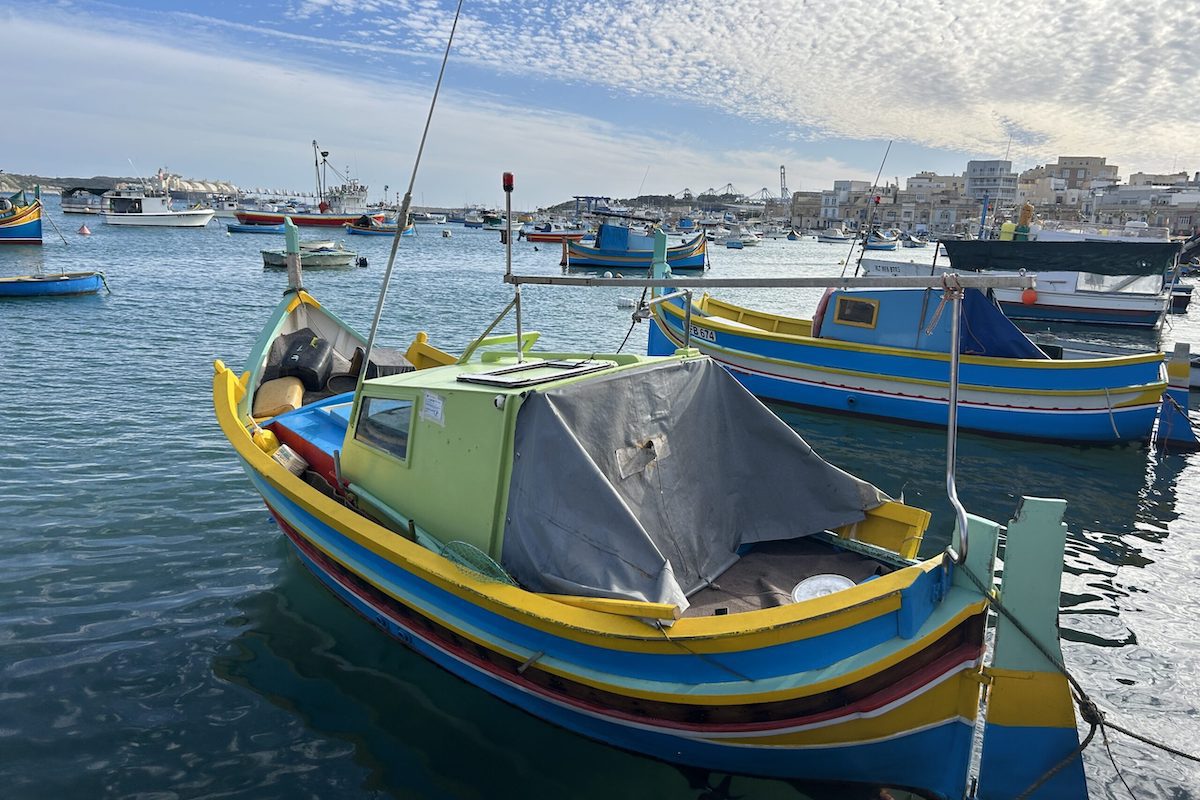
The charming harbour in Marsaxlokk / Photo credit Carolyn Ray

The cliffs in Marsaskala / Photo credit Carolyn Ray
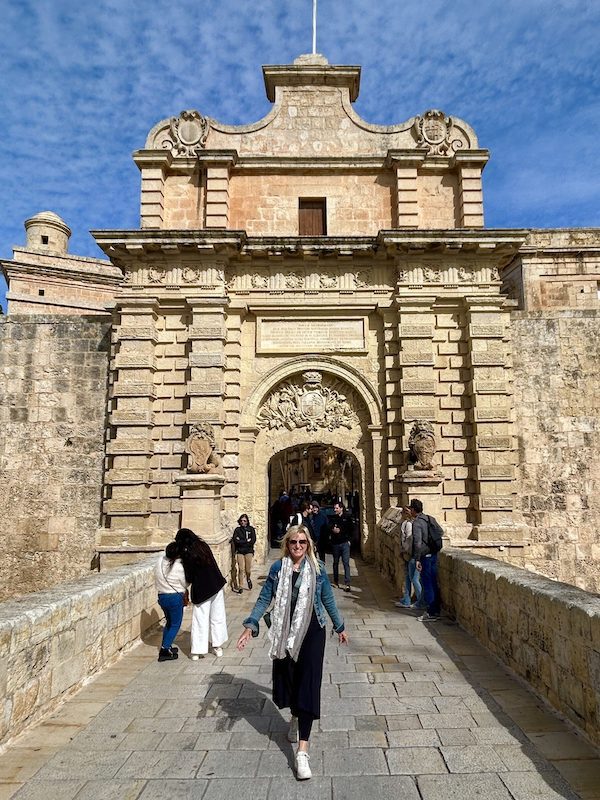
The medieval gate in Mdina / Photo credit Carolyn Ray
Getting Around Malta
Both Bolt and Uber operate in Malta and I found them reliable and cost-competitive. (Download the apps in advance).
Malta ferry or bus: Buy a Talijandra pass at the airport for $6 which includes a complimentary pass. You can use the card on ferries and buses. The express bus from the airport (X1, X2 etc) is 2.50 euros, and took about an hour to Saint Julian. Buses take cash (Euros). From Sliema to Valletta, the bus across town to Three Cities is about $2 or $6 return.
Taxis: The island is served by both Bolt and Uber which are very affordable – from Saint Julians to Valletta is about $8 one way, from Valletta to Airport $10. Download your apps in advance.
Renting a car in Valletta: Car rental is cheap, at about $8 a day from Hertz, then add-ons like insurance take it up to $40. There is a set $6 flat fee to enter each city on the island. If you rent, remember that you’re driving on the right-hand side of the road. Like those in Italy, gas stations use pre-paid machines that accept bills and cards. It’s a good idea to have cash on hand after 6 pm. Find a car to rent here.
Where to stay in Malta
There are several different communities near Valletta Old Town. I stayed in Saint Julians a beautiful fifth-floor apartment with views of the bay. If I go back, I’d like to try Three Cities as it feels less touristy. For a first-time traveller, I suggest staying in Valletta. Some reader-recommended hotels include Palazzo Rosario boutique hotel, Hotel Una Palace, or Casa Rocca Piccola. Find a place to stay on VRBO or on booking.com here.
Read More about Europe in the Low Season
Catania, Sicily, the Island of Dreams and Legends
Catania, Sicily offers rocky volcanic coastlines, where treasures of the ancient world sit next to Baroque monuments and charming villages.
Will Travel for Food: Food Tours for Solo Women
Not only do food tours give insight into a culture, they are a great way for solo women to connect with locals and other travellers.
Seduced by Sicily: How Palermo Captured my Heart
With Middle Eastern, North African, Spanish, Greek and Italian influences, Palermo, Sicily, is one of those places that captures your heart.





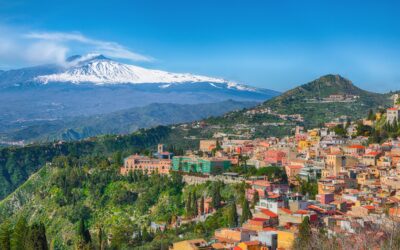

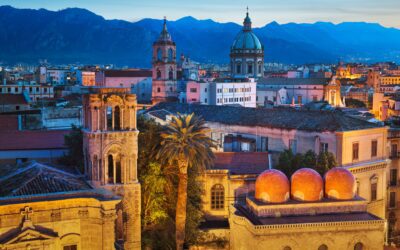
Hello Caroline Ray,
Thank you very much for the beautiful photography of Malta, I got a chance to visit Malta a few years ago and today looking at the photographs again I feel as if I am in Malta. It is a very beautiful place, one should visit here once, if I get a chance again, I would definitely like to go again.
Thank you for this feedback! I hope you have the chance to go back!
I just spent two weeks in Malta in May, 2024. I stayed in Mosta, a very residential area in the middle of the island, located a few kilometers north of Mdina. While I was unexpectedly there to look after my mom who fell and broke a hip on her tour, I took the time to frequently get out and cycle around the island. Though every article I read before heading to Malta said cycling on the island was dangerous, I didn’t find it so. I thought it was a great way to tour the island, especially the southern and western areas, though the heat and some steep roads made life tough at times.